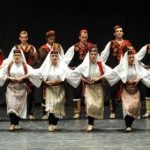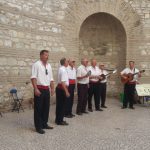Continuing her look at the intangible UNESCO heritage of Croatia on March 21, 2017, Filipa Marusic turns her attention to the toy making traditions of Hrvatsko Zagorje.
The traditional manufacturing of children’s wooden toys presents the recognisable traditional product of Hrvatsko Zagorje. This craft was developed in the 19th century, and it was listed as UNESCO intangible heritage in 2009. The reason why these toys are so special lies in the fact that this tradition was preserved in villages in Zagorje, and the way of making the toys has remained the same.
From the first toys ever made to the present, there were times when the producers crafted up to 120 different toys, while now they make approximately 50 of them. The toys range from various reeds, tamburitzas, animal-shaped toys and common use objects. The popular toy before was the reeds called “žveglice” and simple “jedinke” (one pipe whistle) and “dvojnice” (two pipe whistles). The toy makers are often called “žveglači” because of this popular instrument. The range of toys expanded over the years, and popular motifs were and still are different wooden animals such as the rooster, bird, fish and horse, objects like the hammer, pistol, violoncello, tamburitza, trumpet and children’s furniture for dolls. The most popular toys are definitely the ones that can be moved with help of wheels or stick – like butterfly/bird “clappers” locally called “klepetaljka” and jumping horses or instruments like tamburitza. This instrument usually comes in different sizes, and the toy makers go through all phases of instrument tuning, and the final product is the actual instrument, only smaller in size.
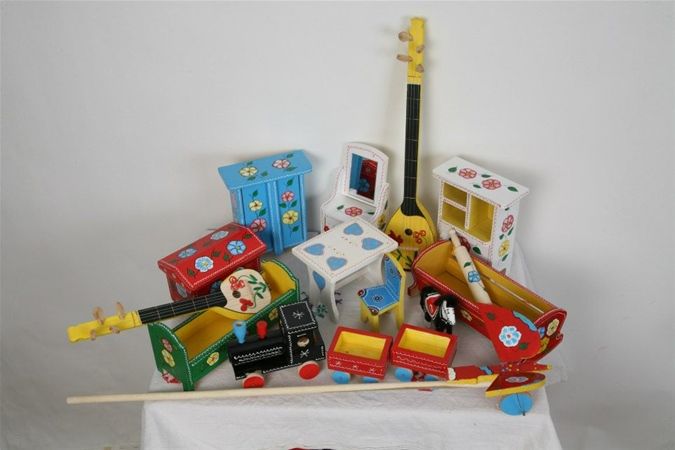
An interesting thing about the toy-making process is that men usually make the toys while women paint and decorate them. The material used is soft wood from the area such as beech, willow, lime and maple. The men carve the wood after drying and cut it with help of wooden or cardboard models. The tools used in manufacturing are the same now as then – sharp knives, plane and “štruk”. Sometimes the shapes are made with the use of electric saws in order to get desired shape faster. The paint used is eco friendly and safe for children. All these toys are mostly coloured in bright colours with multi-coloured strips. The base colours are red, yellow, blue, black and white. Inspiration for decorations is taken from the nature and based on the inspiration of the moment. The ornaments are usually floral or geometrical. This all makes each toy handmade and unique.
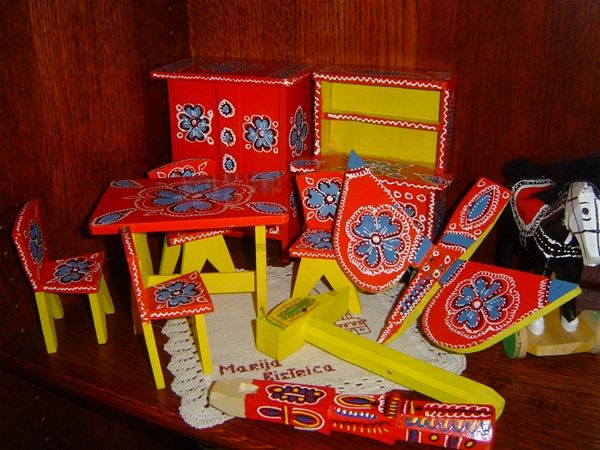
Toy making in Croatia first started in 19th century and at the time it was present in only three areas in Croatia: in villages like Vidovec near Zagreb, village Zelovo near Sinj in inland Dalmatia, and in villages in Hrvatsko Zagorje. While this production completely stopped in Vidovec and Zelovo, the villages in Zagorje kept the tradition and this handicraft is still proudly present in villages around Marija Bistrica and Stubica, such as Laz, Laz Stubički, Laz Bistrički and Tugonica, where toys are produced without interruption from scratch by self-taught inhabitants. All these villages are situated on the northeast slopes of mountains Medvednica and in the Krapina valley, and they all are on pilgrims’ route to Marian shrine Marija Bistrica where the most of the toys are sold. The toys are also sold during different parish fairs, church festivities, markets and shrines throughout Croatia. The traditional toys from Zagorje will almost always find a place on events like this, and people who visit the events will expect the toys to be available for purchase. The production method is still transmitted in local families and this manufacture is still alive thanks to producers who adjusted the range of their products to the new generation by introducing a different range of toys. At the same time, some of the toys produced today are almost identical to those made more than a hundred years ago.
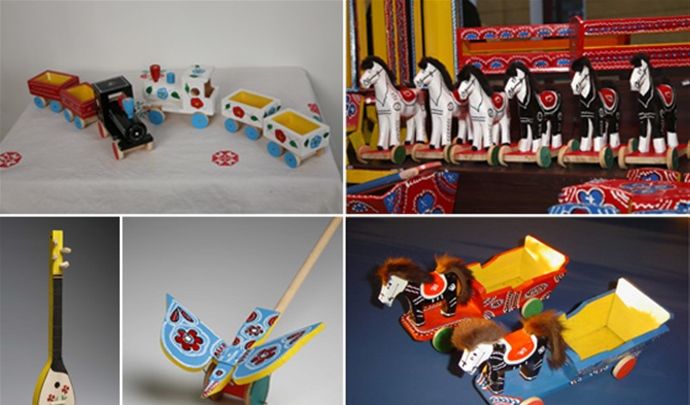
An important role in preserving this specific toy making tradition is the placement of the toys on events like parish fairs, markets and specialized shops. There is a centre for traditional values and crafts in Kumrovec, as part of the Old Village museum which is dedicated to preserving this traditional craft. As part of the Peasant Uprising museum in Gornja Stubica there is a project Zagorje souvenir fair, which has souvenir shop full of works of traditional artisans and toy makers. These two museums and several other museums in Hrvatsko Zagorje are part of the Craftatract project, which encourages different activities like workshops, seminars, school meetings, exhibitions in order to promote traditional crafts. This heritage is presented in the Ethnographic museum in Zagreb – their exhibition has more than 600 valuable exhibits with some toys produced as far back as the mid-19th century.
All the support from cultural institutions is an additional boost for this craft that already has motivated locals who decided to keep it as active part of their lives.
SOURCE: Ministry of Culture, Biškupić-Bašić I.: Traditional Manufacturing of Children’s Wooden Toys in Hrvatsko Zagorje – Culturenet, Etnografski muzej Zagreb, Etnografski muzej Istre, Visit Zagorje, Tourist Board Marija Bistrica, Tourist Board Zagreb, U Zagorju, Craftattract, MHZ


